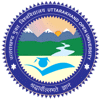User:Wikitrainers/page:DECP05-Unit3-Ch1.03
| Home | About UOU | About CEMCA | Contact Us
| |||||||||||||||||||
|
Chapter 3.1 - Technology Framework in e-Learning
With the adoption of 21st century technology, there is a major paradigm shift in instructional methods to reflect the challenges present in today’s society. With the use of technology, the content’s role can be extended beyond books and class room. Technology provides students with the opportunity to interact and ask questions via E-mails or discussion forums and also collaborate with other students in the understanding of the course content. This use of technology virtually gives the students access to the teacher at all times where they can ask and receive answers to their questions without having to speak in front of large group. It also makes possible for the students to access lectures, demonstrations or discussions when required, rather than being lied down to a fixed schedule. These resource materials are stored and available in digital format (CD - ROM or DVD) and can even be delivered on demand via the Internet. Each technology is likely to play a different role in students learning, e.g., word processing and e-mail promote communication skills, database and spreadsheet programs promote organization skills and modeling software promotes the understanding of science and math concepts. There are numerous multimedia programs designed to meet the special needs of diverse learning, e.g., a student learning English language would benefit from a computer program where they could learn the language at their own pace. They could spend as much time as needed on the computer, without feeling pressured to keep up with other students. One cannot expect all teachers to teach in this fashion but a computer program or multimedia application may have the capabilities of doing so without taking additional time away from other students. By utilizing such programs a single teacher can employ many more resources and methods within one class room, rather than teaching the information in one manner to all students. |
| |||||||||||||||||
| OER - Post Graduate Diploma in eLearning Uttarakhand Open University
|
====== Design By: Yogesh Munjal == | ||||||||||||||||||
